In early December 2024, a photography enthusiast captured rare footage of a snow leopard, a national first-class protected animal, in action and hunting at an altitude of 3,500 meters in the winter pasture of Wulanbuluke Village, Elezaitewulu Township, Hejing County, Bayingolin Mongolian Autonomous Prefecture, northwest China’s Xinjiang Uygur Autonomous Region.

(Photo by Si Caiceng)
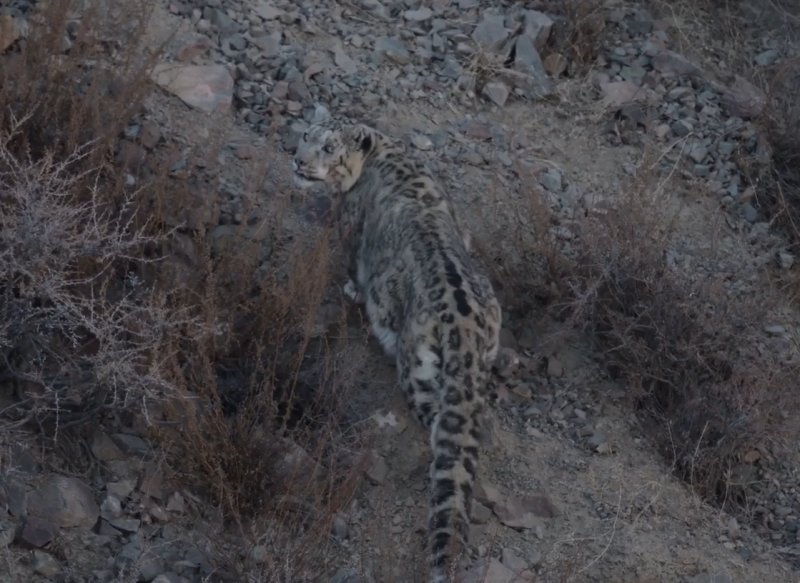
(Photo by Si Caiceng)
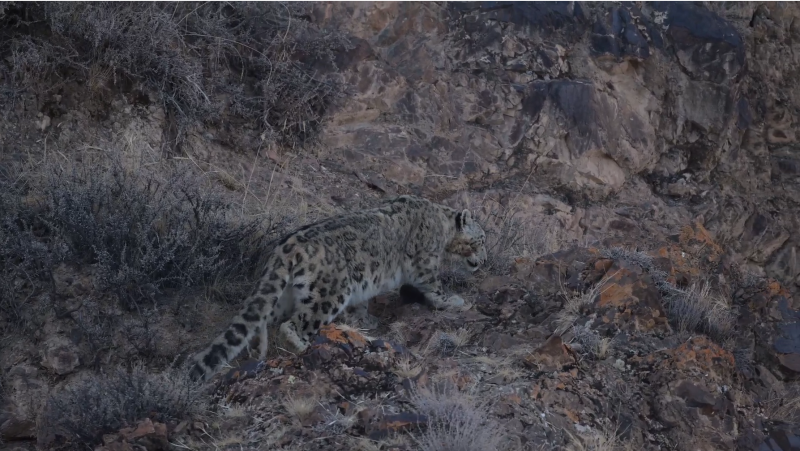
(Photo by Si Caiceng)
The Bayanbulak Grassland, with an average altitude of 2,500 meters, is a frequent haunt for snow leopards during the winter season, as they roam the mountainous area in search of food. The photos reveal a robust adult snow leopard blending in with the rocks, which are similar in color to its fur. As it moves through the landscape, the snow leopard keeps low to the ground, vigilantly scanning its surroundings, seemingly on the lookout for prey. Soon, an adult sheep falls victim to the snow leopard's hunt. The photos show the snow leopard biting the sheep to death and then cautiously tearing at its prey while keeping a watchful eye, occasionally looking up to guard its meal. Interestingly, a magpie can be seen hovering around the snow leopard throughout the scene.
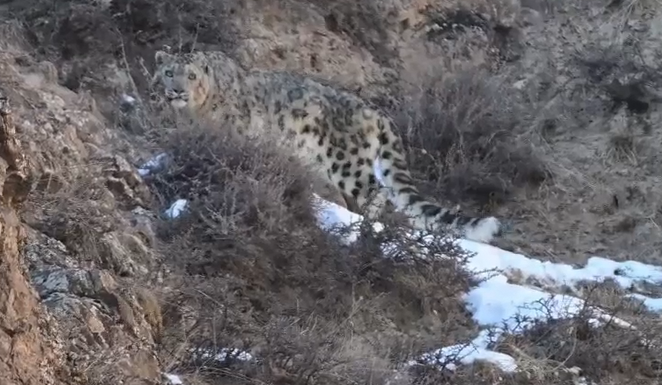
(Photo by Si Caiceng)
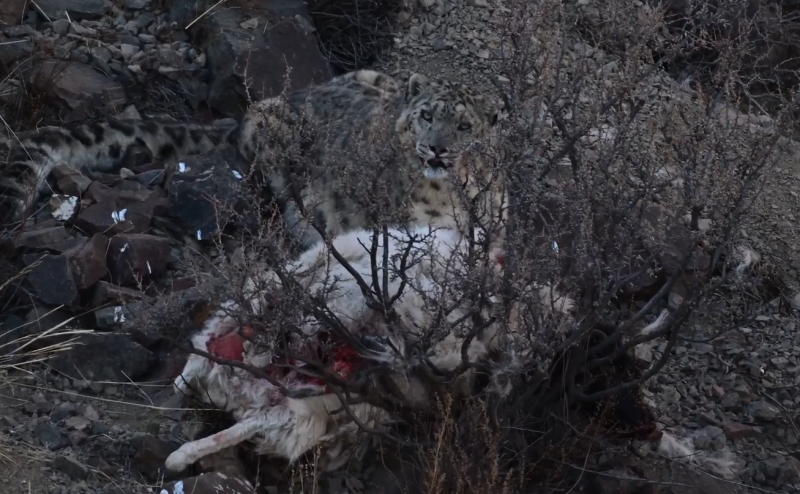
(Photo by Si Caiceng)
The snow leopard, known as the "king of the snowy mountains," is a national first-class protected animal in China and is listed as an endangered species by the International Union for Conservation of Nature. These elusive and cautious creatures prefer to hide alone in the mountains and forests, making them rarely seen in the wild. Even experts studying snow leopards have to invest a lot of time and effort to track their movements.
Snow leopards inhabit the highest altitudes on Earth, dwelling in snowy plateaus and perching atop icy peaks and ridges. They feed on various mammals such as blue sheep and argali. When food is scarce, they may also prey on livestock and poultry, but they never actively attack humans. The high-altitude mountainous regions like the Tianshan Mountains in Xinjiang are the primary habitats of snow leopards, where they are often found in environments of perpetual ice and snow, high mountain bare rocks, and cold desert belts.
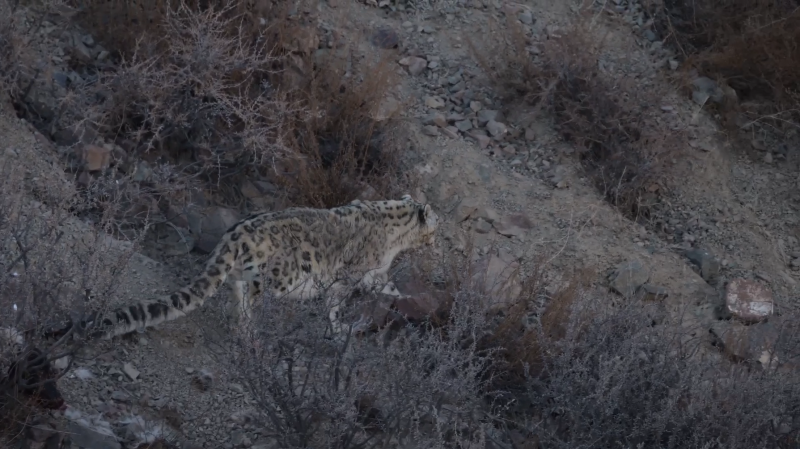
(Photo by Si Caiceng)
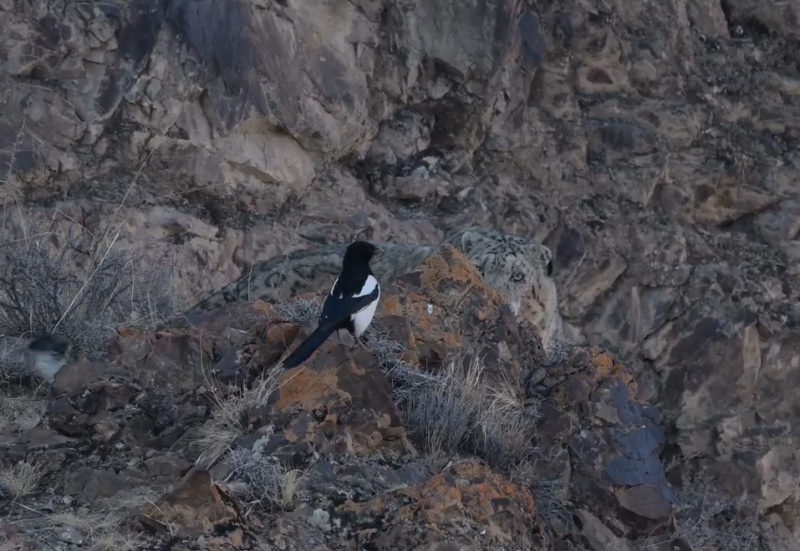
(Photo by Si Caiceng)
In recent years, Hejing County has been intensifying its efforts in ecological protection and management. By implementing measures such as relocating herders, establishing grazing bans with fences, providing grassland ecological subsidies, and protecting water conservation areas, the ecological environment of the mountainous and grassland regions has seen significant improvement. This has led to a positive cycle within the ecosystem, and the population of wild animals has been steadily increasing.
(The Media Convergence Center of Bayingolin Mogolian Autonomous Prefecture, Reporter: Bateerdala; Correspondents: Maoalatengtuya and Si Caiceng)









